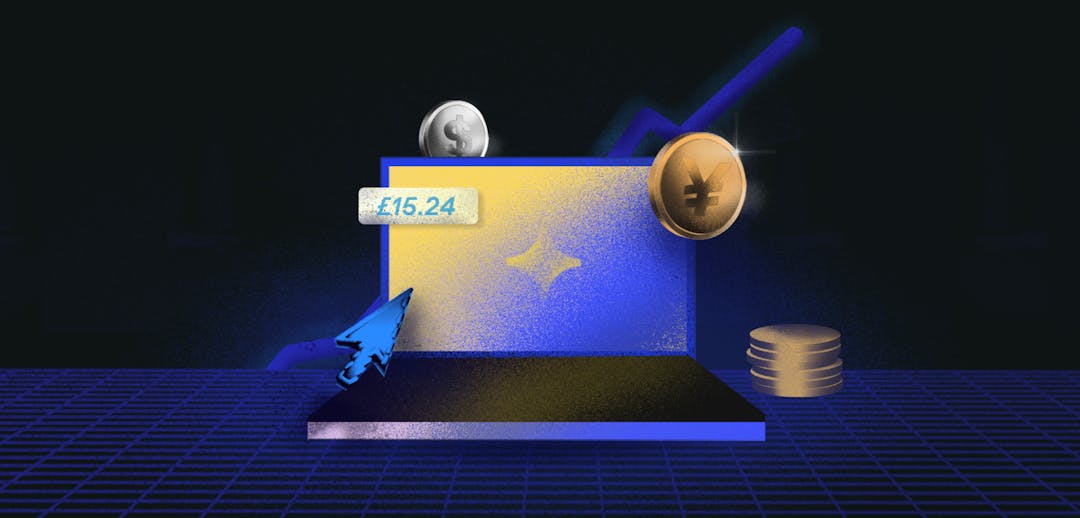Over the past 5 years, an exponential explosion has occurred in the number of request for proposal (RFP) opportunities available to small and medium-sized businesses. Yet many companies still don’t see the RFP process as a proper avenue for acquiring new clients or generating more revenue. There is a growing fear associated with submitting worthy and competitive responses that prevents companies from investing resources in these opportunities. Most of that fear emerges when it comes time to determine a bid price, as the concealed nature of the bidding process can persuade businesses that utilizing deep discounts is the only way to win out over competitors. However, you don’t have to hit the big red panic button when it comes time to price your RFP submissions.
What is a Request For Proposal (RFP)?
A request for proposal, also known as an RFP, is an invitation published by a company for vendors to submit a proposal for the supply of goods and/or services. An RFP can have many different names – RFT (Request for Tender), RFQ (Request for Quotation), EOI (Expression of Interest) – but the process is essentially the same. A company or agency publishes an invitation for vendors to make a proposal for the supply of goods and/or services. Any competition for the relevant contract must be conducted in response to the request. There is a concrete deadline for all submissions, after which an evaluation team assesses the various responses and decides who will be awarded the contract.
What is a pricing proposal?
A price proposal, which is often required for an RFP, is a business’s or individual’s preliminary bid for the price of the potential job. This part of the RFP identifies how much they would charge for their services after calculating all of their potential costs for the project.
3 tactics for pricing submissions to RFPs
While responding to RFPs can be a bit daunting for vendors due to the blind nature of the competition, the right pricing strategy can turn an RFP into a game-changing opportunity. The fundamentals of an effective pricing strategy are as relevant here as they are in any market, but a few specific points are critical to developing an attractive proposal with a bid price that will still improve your margins. As such, let’s take a look at a few of the best tactics for structuring and pricing submissions to RFPs.
1. Timing is everything
When I first started working on pricing bids for RFPs in the IT industry some 20 years ago, there could be as much as 6 months to respond depending on the magnitude of the request. Nowadays, it’s fairly common to see a hefty RFP with a deadline requiring a response within four weeks. Talk about pressure!
Well, even long ago when there was half a year to develop a big proposal, pricing was always done at the last minute. The technical solution was pulled and tweaked right up until the last possible moment and then thrown over the fence to the pricing team. Up until that point, we never even saw the thing.
Doesn’t sound like such a great job right? How can we possibly determine what a saleable, profitable, and deliverable price is when we have half a day to evaluate the project and come up with a number? Even worse, some executive has determined that the price is too high an hour before the submission is due and wants to slash the bid by 15%. On what basis has this been determined? What evidence is there to support this discount? Since it’s far too late to confirm or deny these numbers, the bid goes in with a price that no one can confidently support or justify.
The lesson from this: pricing must be top of mind as soon as you consider responding to an RFP. In order to price your proposal effectively, your pricing strategy needs to be included in every step of the development process, from the qualification stage to the final moments before submitting your bid. The bid price is an exchange rate that must support the services offered in your response, so don’t deliver a Rolls-Royce solution and price it like a VW Beetle just to win the business.
How can we possibly determine what a saleable, profitable, and deliverable price is when we have half a day to evaluate the project and come up with a number?
2. Your client is king
Furthermore, in order to justify the price of your proposal, you must make sure that the client’s needs are the focus of your decision making. What the client wants should drive the technical solution, the pricing, the way your response is structured, and how the services are delivered. All too often, service providers get so bogged down in the technical details contained in the RFP documentation that they forget exactly what problem the client is trying to solve.
You must take a holistic view of the client’s request to develop a solution that includes the services and features that will provide value to the client. In fact, what you really need to analyze is what the client is buying versus what you are selling. I know this sounds simple and obvious, but it’s important that you ask yourself this question very early on in the process.
I learned this firsthand with a very large IT outsourcing RFP. A large financial institution was looking to outsource some back-end data processing, and at face value, it looked like our client was simply trying to find cheaper labor locally or overseas to reduce operating costs. However, the bid team I was on determined that this wasn’t the case. What they actually wanted was to remain at the forefront of technology to ensure they could process transactions as quickly as possible, both now and in the future. So, we gave them access to a web portal that displayed the processing times of a substantial amount of companies both within the industry and outside the industry. This is exactly what they wanted to see to ensure they were at the front of the pack. The cost to our organisation to implement the portal was inconsequential, and we went on to win the RFP.
3. Focus on the right value metrics
Anyone who has ever been involved in a large RFP has probably felt the need to flee to higher ground when they see the spreadsheets for the first time. Particularly when doing work for government proposals. The most horrific one I ever saw was an enormous spreadsheet with 30+ tabs and literally thousands and thousands of rows. Unfortunately, a vast majority of organizations believe that the primary role of a pricing analyst is to fill out spreadsheets like these based on arbitrary internal cost allocations (Sorry, my little rant!).
Anyways, you still have this convoluted and incredibly complicated spreadsheet sitting in front you that you have to fill in. What are you going to do? I know you want me to say there’s a magic formula for populating all the cells, but there is no silver bullet. You still have to fill in the pricing schedule (the price sheet listing all the items that may be purchased from the vendor) in its prescribed format, but that shouldn’t dictate how you think about your pricing.
Summary: Don’t Fear RFPs – Embrace the Opportunity
RFP pricing is a powerful weapon in your arsenal, but in order to use it to your advantage, you need to think outside the box. Creating an RFP bid price for your response is more than adding up your operating costs, deciding on a profit margin, and hoping for the best. Find out what the client truly needs so you can develop a solution that provides the greatest value, and include pricing in every step of the process to ensure you can confidently justify the exchange rate for your services.

This article is a guest post from Greg Eyres, Director and Principle Consultant of InforValue, a company based in Australia that provides proposal pricing advice and services. Greg has 20 years of experience in the finance and IT industries pricing bids and developing responses for proposals.




